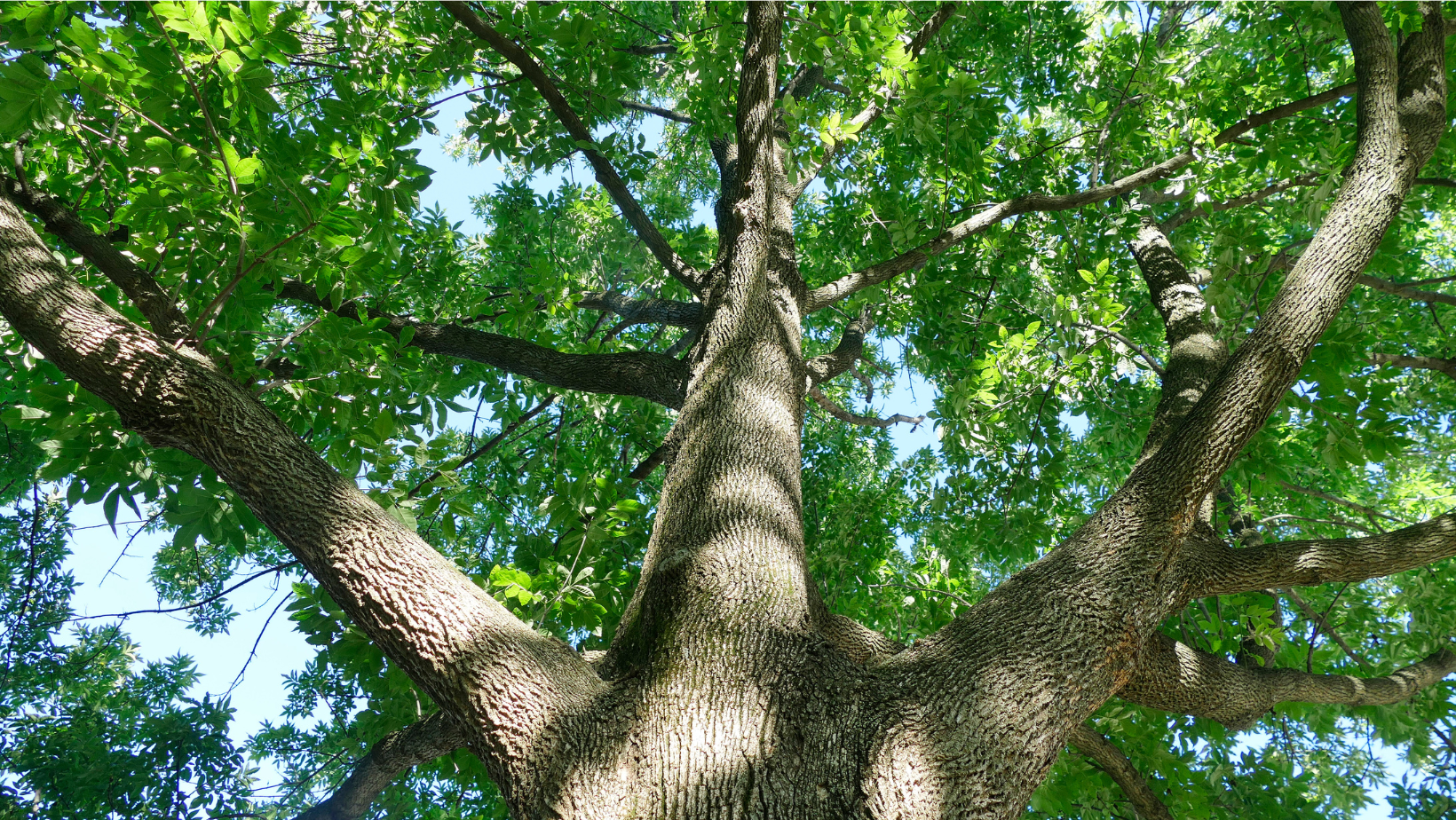Our Professional Arborist on our Staff is Justin.
He is extremely knowledgeable about the emerald ash borer that is infesting Minnesota’s native ash trees.
Ash Trees
(Click on the links to keep from scrolling)
If you have any questions or concerns, or would like to schedule an appointment
Call Us Today! 952-404-BOGO (2646)
Share This Page!
Benefits of Treating an Ash Tree
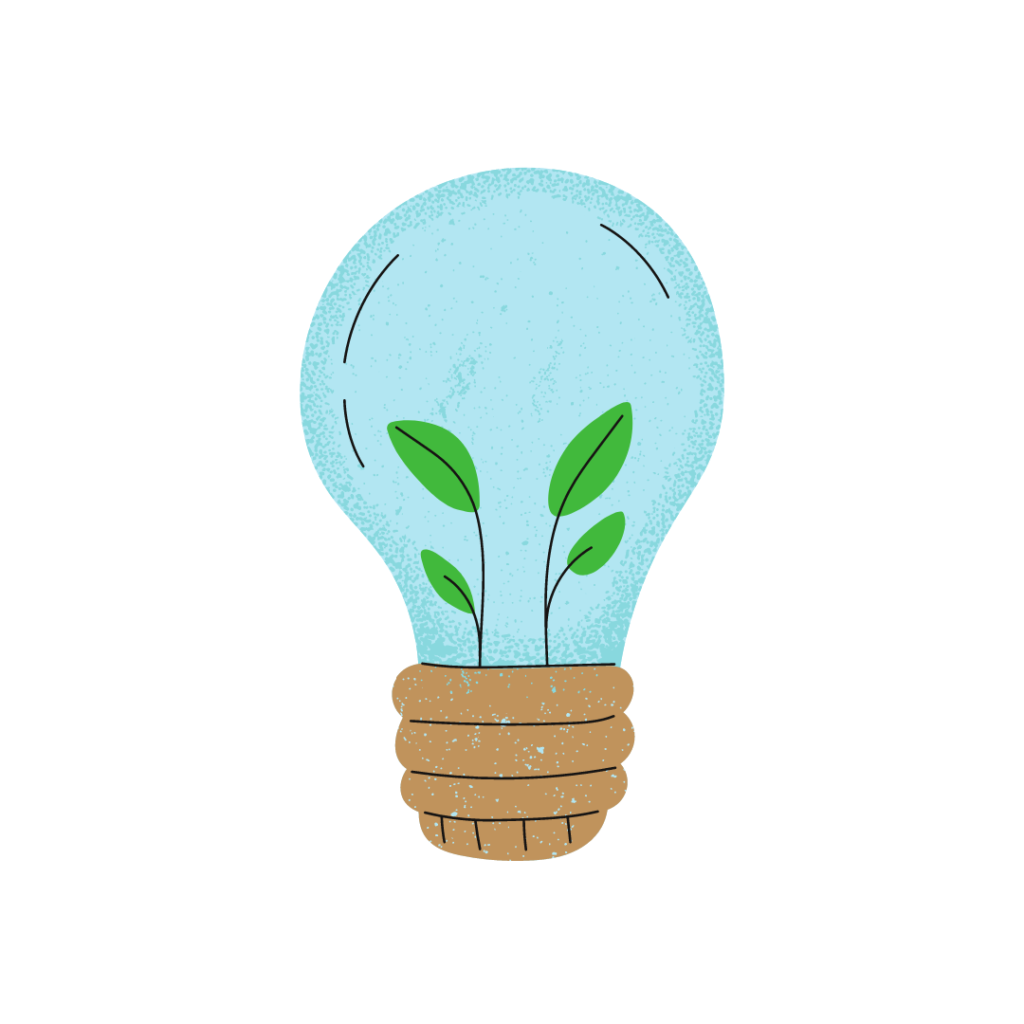
Energy Savings
Mature ash trees provide shade to homes and businesses. With the shade that they provide, the trees can keep your home cool in the summer, leading to lower monthly AC costs. “The American Power Association estimates that effective landscaping can reduce a home’s cooling bill by as much as 50% a year.”
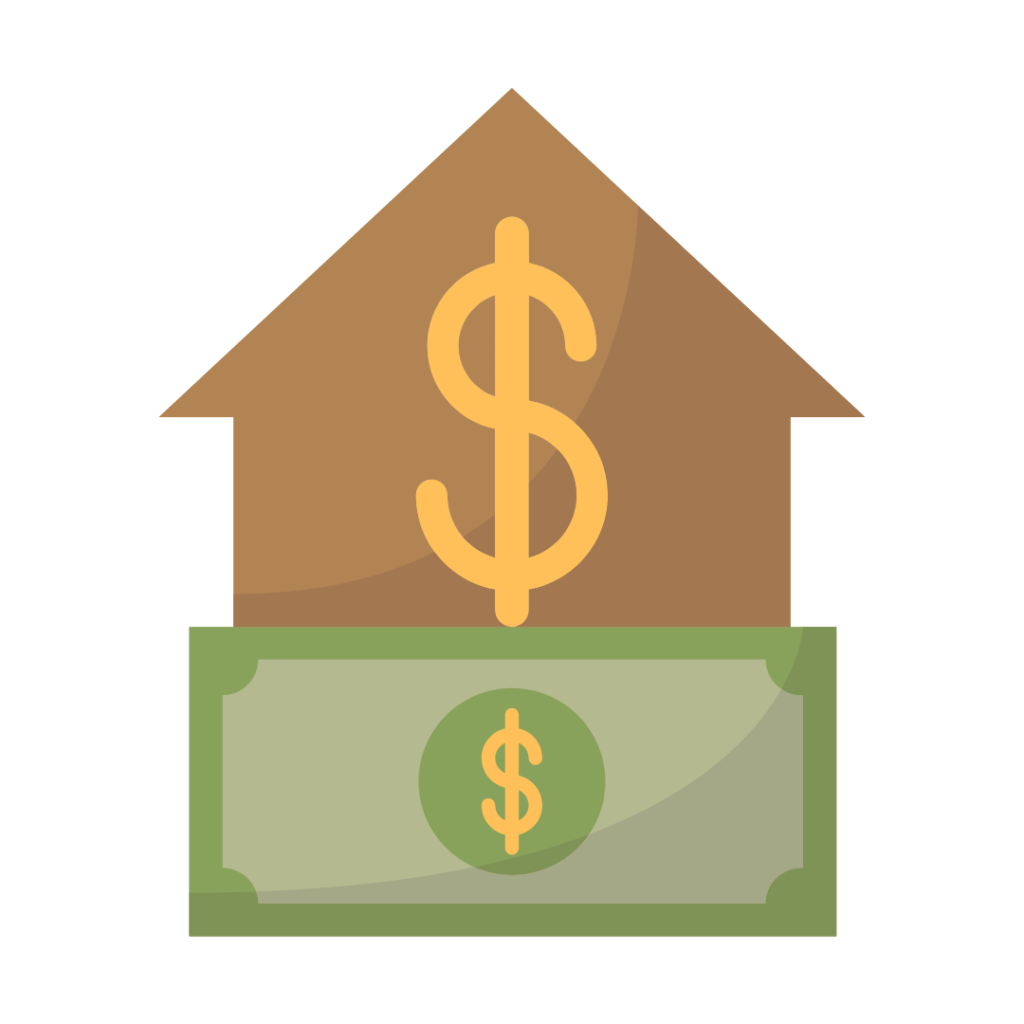
Higher Property Values
Having large trees on your property can increase the value of the home by 3-15%. One ash tree can add a thousand to tens of thousands of dollars to the cost of your home. In Minnesota, some of the ash trees are hundreds of years old. You can’t replace a 100-year-old tree with another one. Once it’s gone, it’s gone forever.

Health Benefits
It’s been proven that trees provide numerous health benefits. Looking at trees and walking around trees lowers blood pressure, reduces stress, and can improve your mood. Trees can also help boost our immune systems. Trees produce chemicals to help protect them from diseases and insects. These airborne chemicals, when breathed in, can kill virus-infected cells inside your body. Research is being conducted to see if these chemicals can prevent certain cancers from forming. A study done on the effect of the emerald ash borer killing ash trees concluded that across 15 states, EAB played a role in 6,113 deaths related to lung disease and 15,080 heart disease-related deaths. To read more on this study, click the link to the National Library of Medicine.
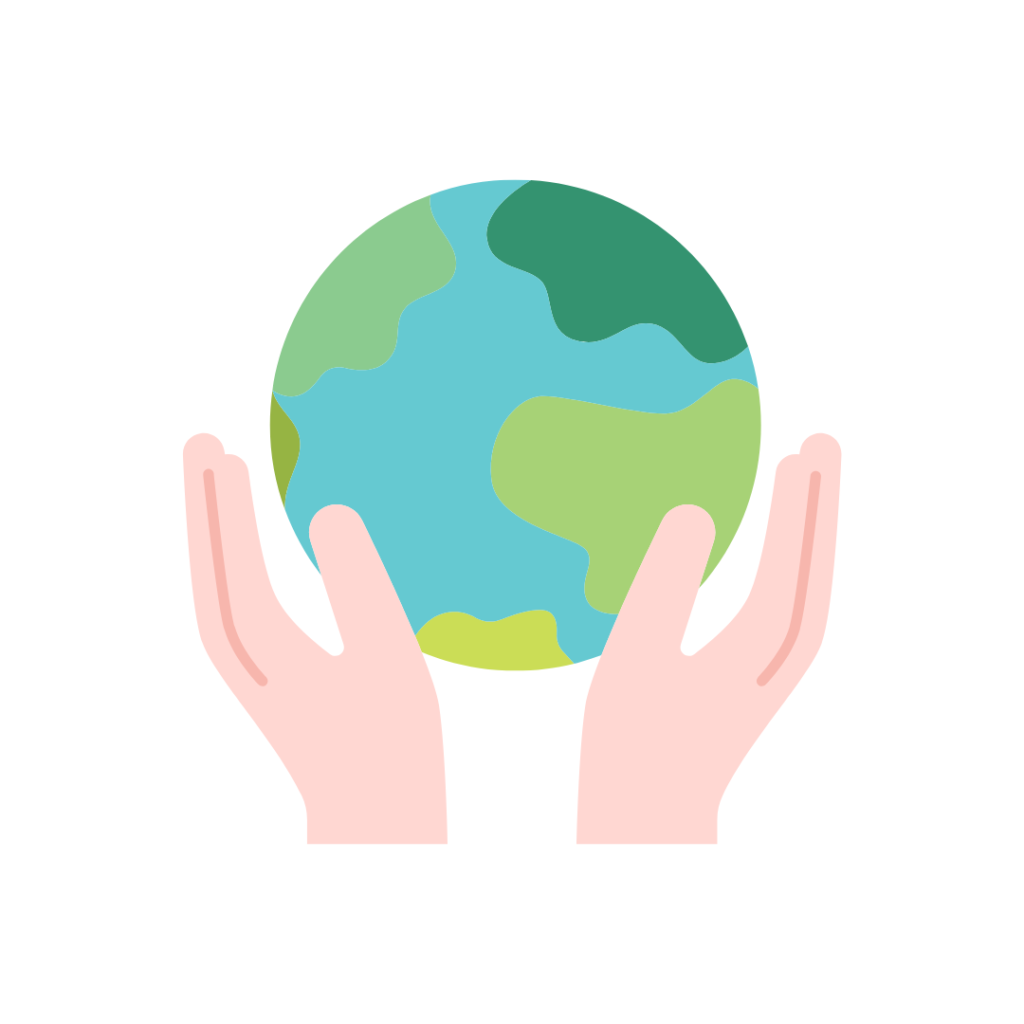
Environmental Impact
One mature ash tree can absorb 1,000 pounds of carbon dioxide from the atmosphere per year. Their leaves also remove nitrogen oxides, sulfur dioxides, and carbon monoxide. Making the air we breathe cleaner and healthier. Mature ash trees are also beneficial in absorbing rainwater. Providing less polluted water to runoff into our lakes and rivers. They also help with reducing water runoff from entering homes. A large ash tree can absorb 2,200 gallons of rainwater a year.
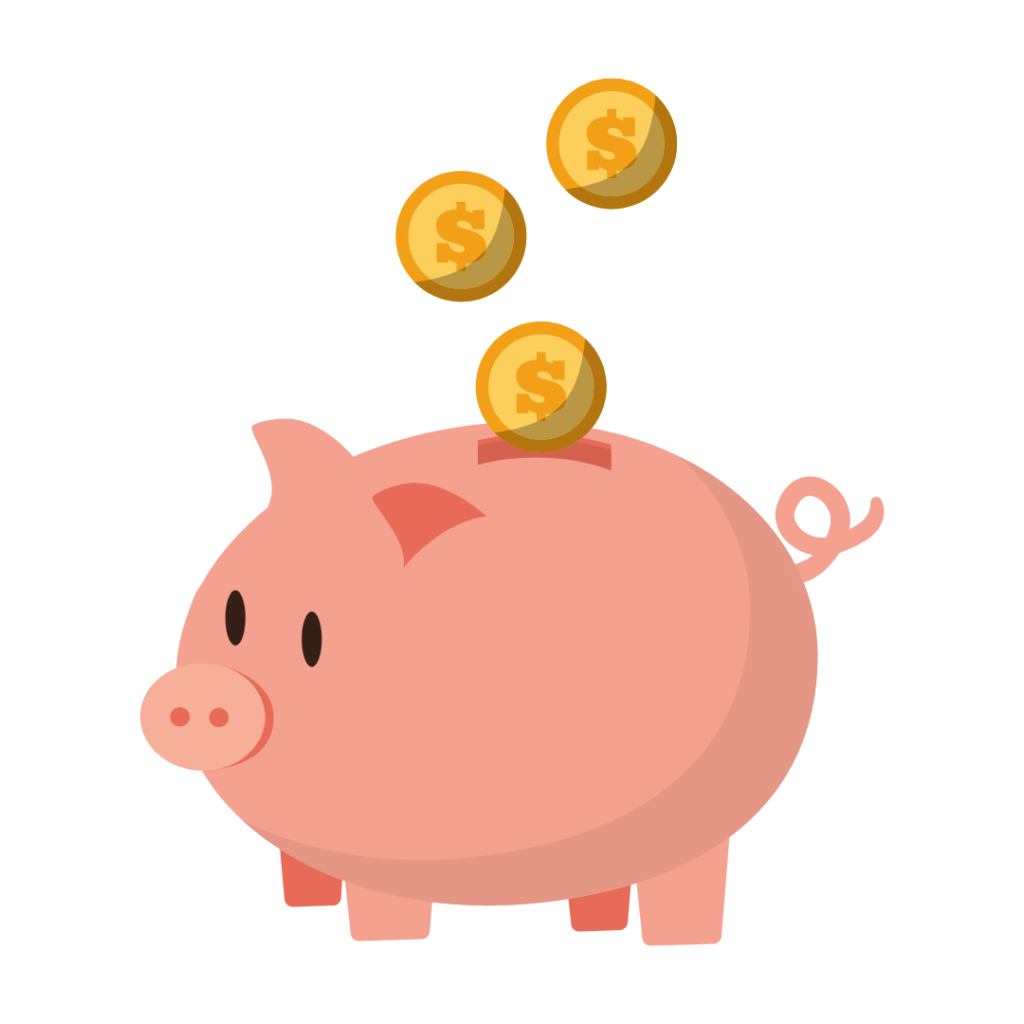
Cost Benefits
The cost of cutting down an infected ash tree costs thousands or tens of thousands of dollars. It can cost more depending on the condition, where the tree is located on the property, and the size of the tree. When ash trees become infected by EAB, their limbs start to die and can fall on houses, cars, and even people. The cost of disposing of infected ash trees is also expensive. Instead of cutting it down, treating a tree usually costs $100-$200. The treatments are done every 2 years. The cost of cutting a tree down may double or triple due to the high demand.
Benefits of Our Ash Tree Service
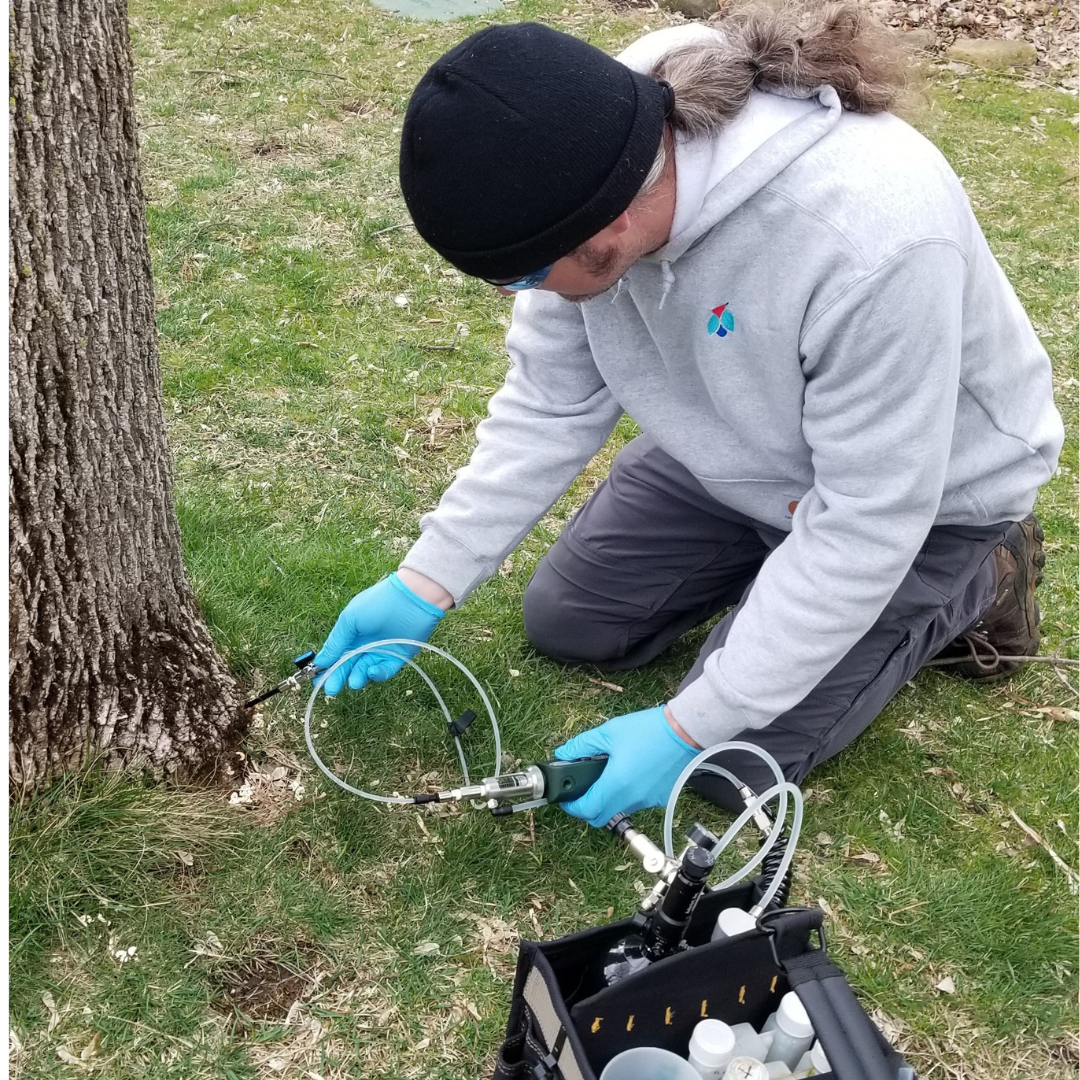
Pneumatic Micro-Injections
BOGO’s professional arborist has experience using different methods for treating ash trees for the emerald ash borer. After seeing the effects of all the variations, the treatment we chose is the most effective. With pneumatic micro-injections, multiple holes are drilled around the tree. The same amount of product is injected into each hole. This allows us to visually track how much product the tree is taking up with each injection. This takes more time than other treatments. But allows for a more uniform spread of the product to protect the whole tree. This treatment needs to be done every 2 years to keep the ash tree protected.
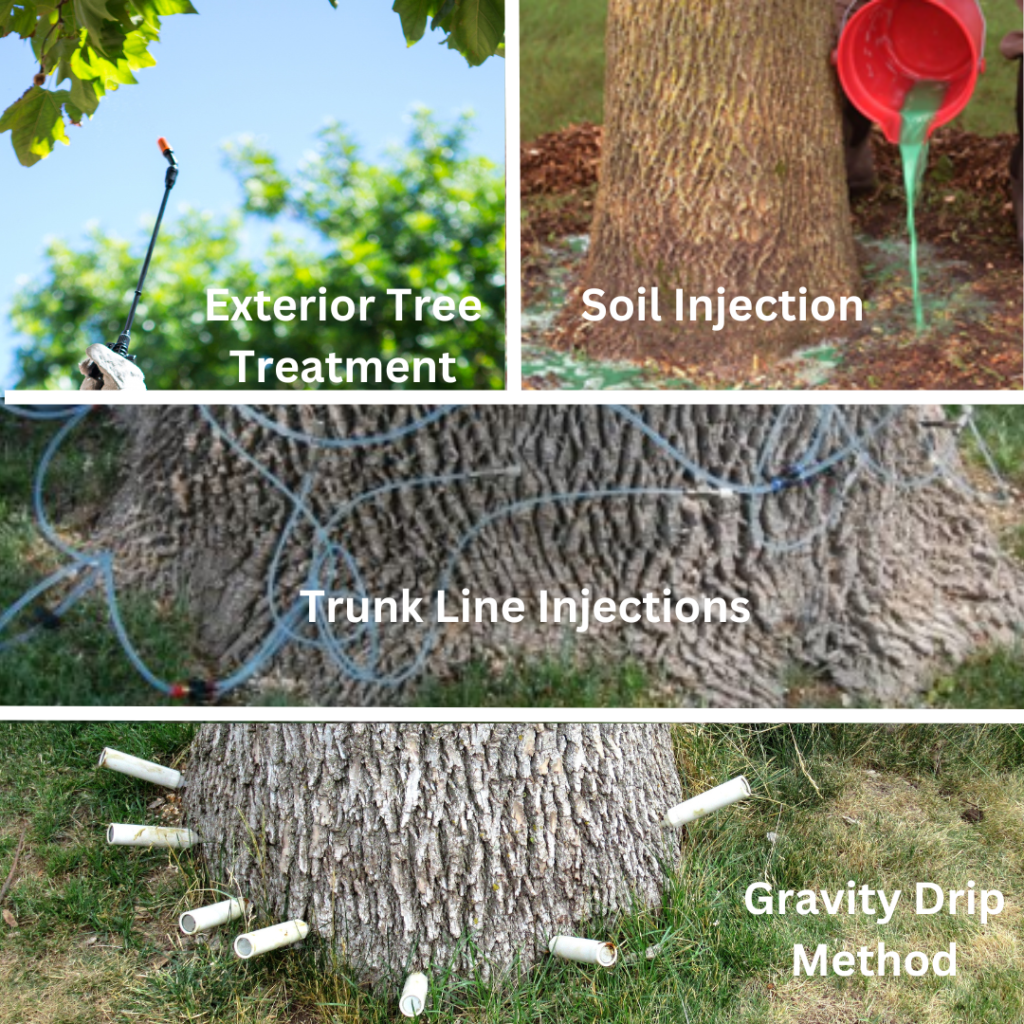
Alternative Ash Tree Treatments
Exterior Tree Treatment: These treatments are the least effective. It’s impossible to spray 100% of the tree. It also requires multiple treatments to be done, which can add up in cost.
Soil Injection: As the product is injected into the soil, there is no way to know the exact amount of the product that the tree absorbed into its roots
Trunk Line Injections: This is the simplest and quickest form of ash tree treatment. The problem with it is that the hose connects to all the insert holes at once. This makes it hard to know how much product the tree is taking up at each injection point.
Gravity Drip Method: This method is not used as often because it’s time-consuming. You need to wait for all the products to go up into each injection point. There can also be clogs that happen that are not always visible and will affect the dosage the tree receives.
Cheap costing treatments: Hiring the cheapest work seems like an easy decision. Unfortunately, with the importance of saving the ash trees, this rarely pays off. Large companies hire summer workers who have no knowledge of tree care and try to get through their day as quickly as possible. They will rarely pay attention to see if the tree is receiving the correct dosage to stay alive.
Identifying an Ash Tree
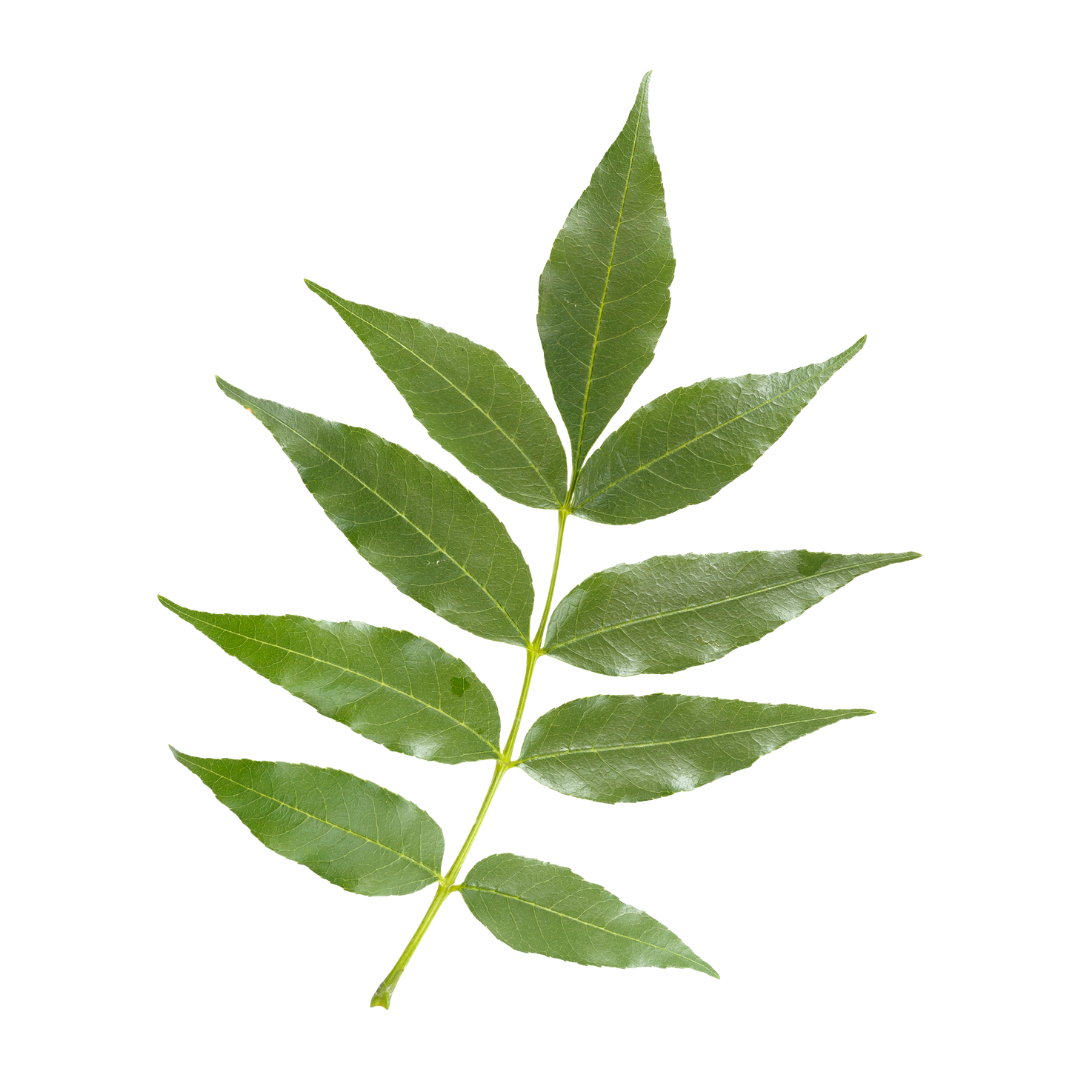
Leaves
Ash trees have compound leaves. A compound leaf is divided by a stem and has multiple leaflets coming out symmetrically in the middle. Ash trees can have 5 to 11 leaflets. The leaflets can have smooth or toothed edges to them.

Bark
(Click on the names for more info)
White ash trees: Yellowish-brown to light gray-colored bark. The pattern of the bark has diamond-shaped ridges.
Green ash trees: The bark varies between gray and dark brown. The pattern of the bark is described as furrowed and has connecting ridges that form a diamond shape.
Black ash trees: The bark is gray; as the tree ages, the bark becomes scaley and peels off easily.
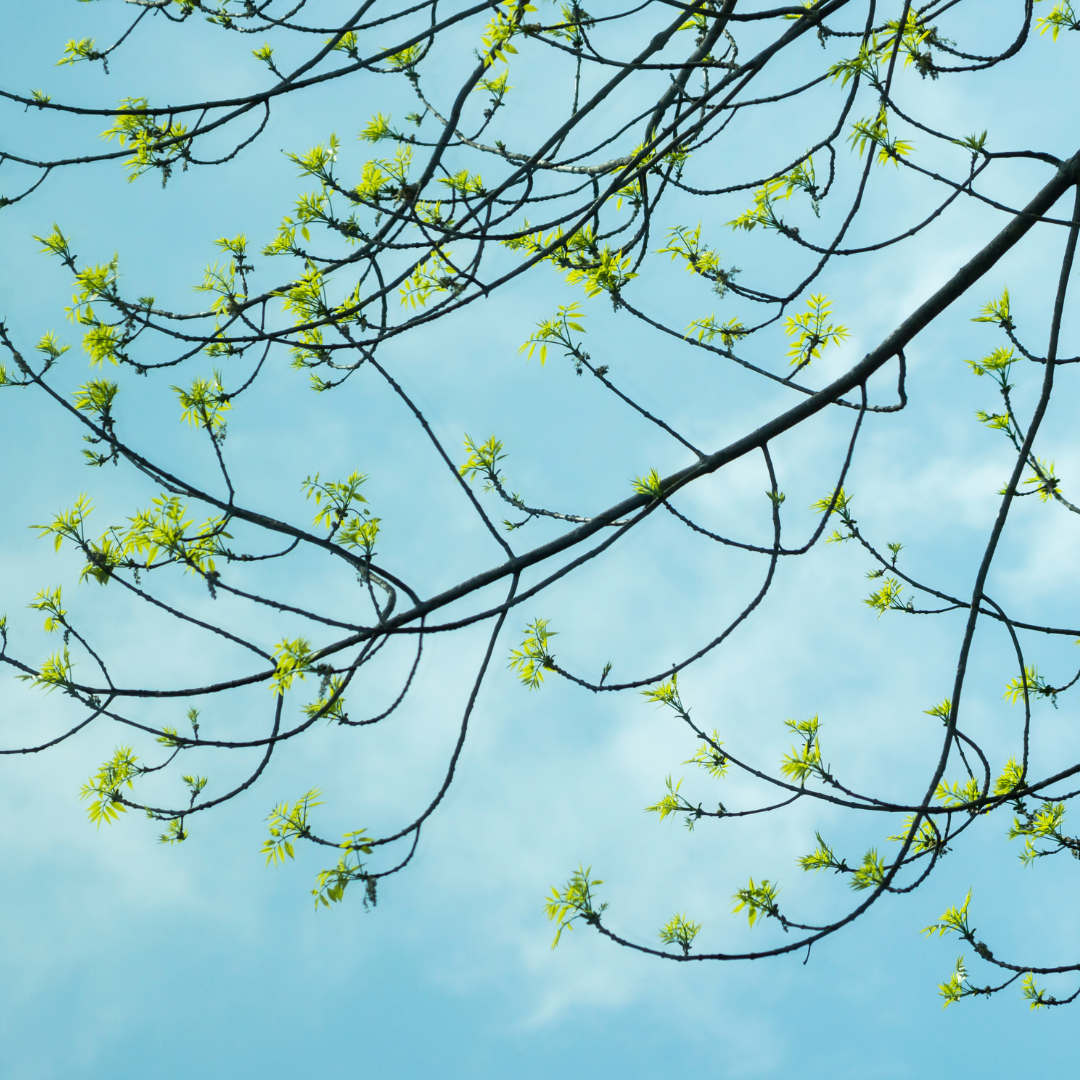
Branches
Ash trees have branches and buds that grow directly opposite one another. Also known as opposite branching.
For more help with identifying ash trees click the link to the Minnesota Department of Natural Resources
Identifying an Infected Ash Tree
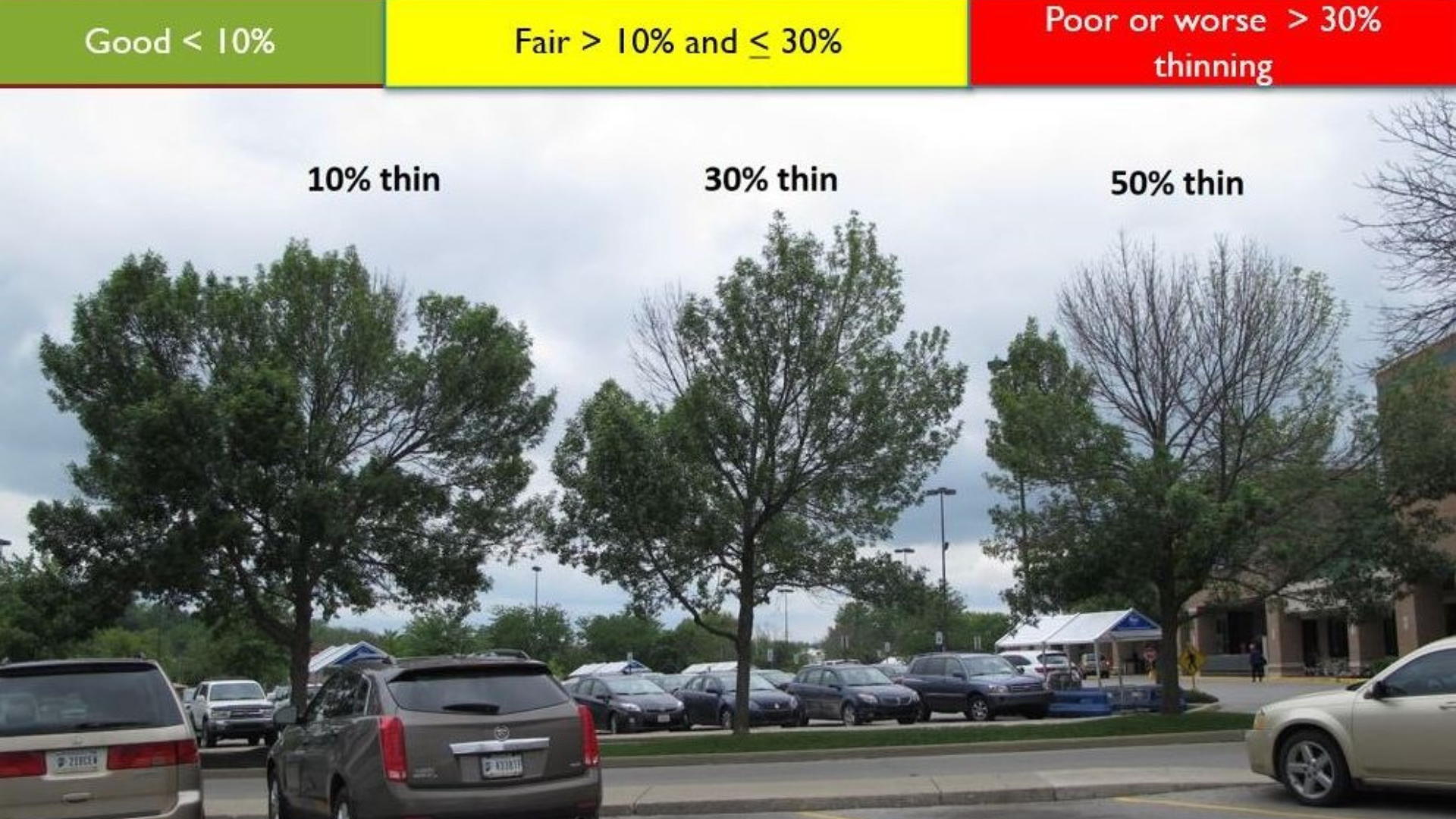
The Emerald Ash Borer

Appearance
They are not very common to spot, but adult-size beetles are bright green and have metallic or shiny coats. When the wings are spread apart, their abdomen is bright red.
Length: 0.25-0.5 inches
Lifespan: 1-2 years
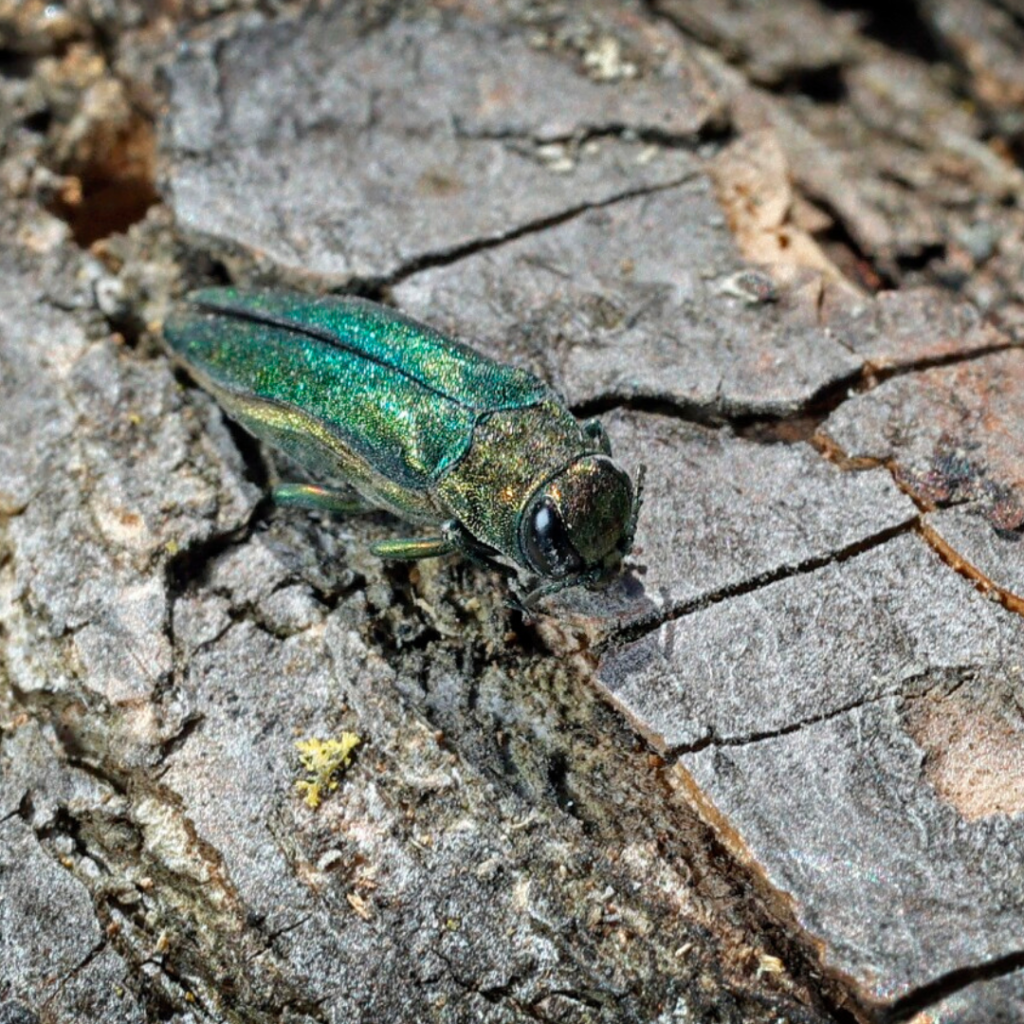
Invasive Species
They are an invasive species that came from northeastern Asia. From countries such as; China, Japan, Korea, and Russia. They were most likely brought here inside wood packing material. They were first recorded in the U.S. in 2002 in southeastern Michigan. They were first recorded in Minnesota in 2009. The first area they were spotted in was St. Paul. Their lives revolve around the ash trees. Unfortunately for Minnesota, there are about 1 billion Ash trees.

Reproduction
They mate on the leaves of ash trees. After mating, the females lay 60-90 eggs on top of the bark. The eggs hatch after 7-10 days. The larvae chew through the bark and get into the cambium layer of the tree. The cambium layer is the growing section of the tree and the first layer after the bark. As they are chewing through the tree,, they make tunnels that cut off the flow of water and nutrients in the tree. Once they grow to their adult size they leave the tree and fly to mate and find another ash tree.
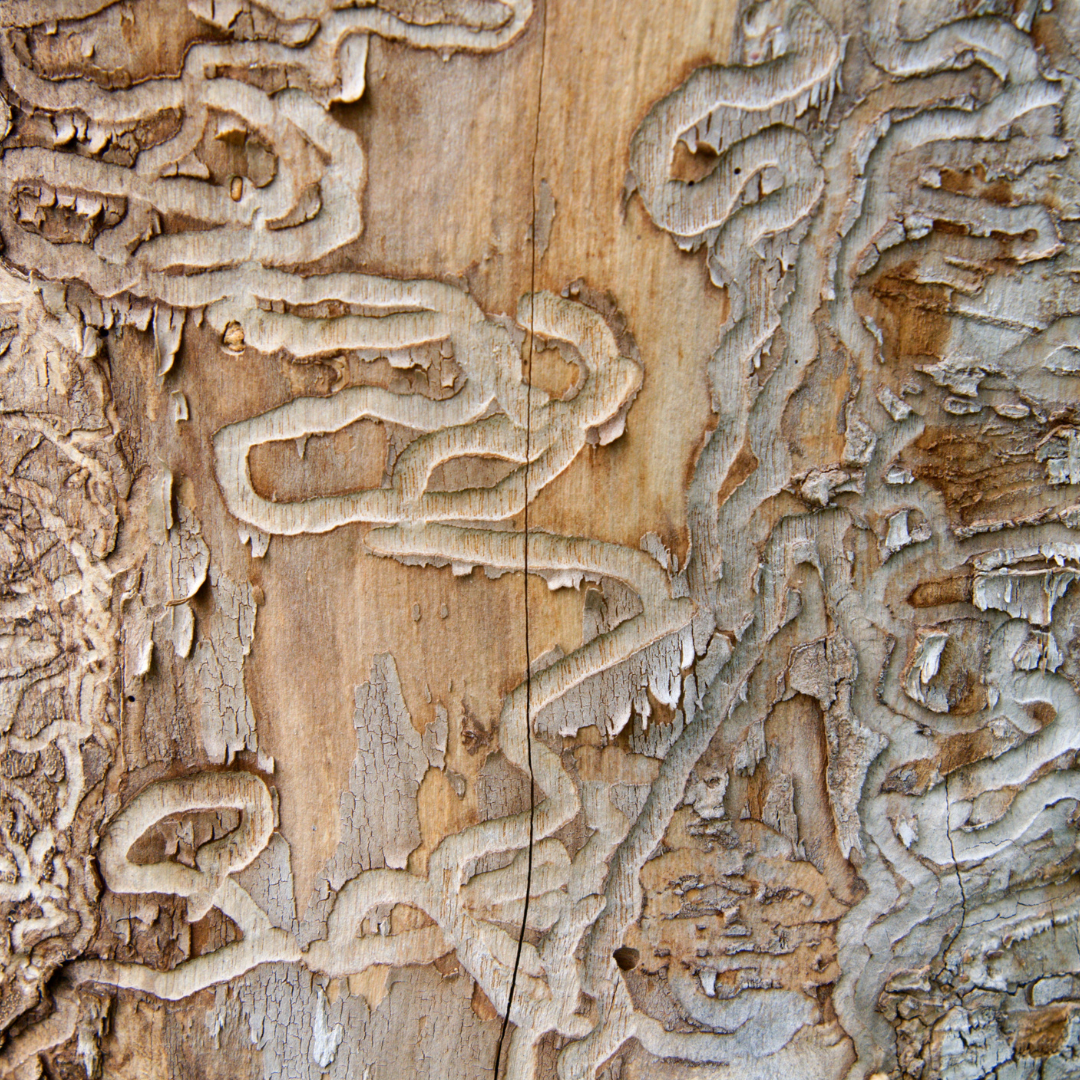
Signs of Damage
The first sign of an infected tree is at the top or crown of the tree. The branches on the top will be the first ones to start dying. This is due to the nutrients and water being cut off. Once 30-50% of the canopy is dead it is too far gone and needs to be cut down. As the top branches began to die new branches will start sprouting out from the bottom or base of the tree. This is the area where the nutrients and water is getting trapped. Looking for peeling bark and woodpeckers are also signs of an infected tree. The bark will begin to split and woodpeckers will eat the adult beetles as they leave the tree.
BOGO Provides Pest Control Services For the Twin Cities and Beyond!
Anoka|Apple Valley| Bloomington|Burnsville|Champlin|Chanhassen|Coon Rapids|Cottage Grove|Deephaven| Delano|Eagan|Eden Prairie|Edina|Elk River|Excelsior|Golden Valley|Independence|Inver Grove Heights|Lakeville| Lino Lakes|Long Lake|Maple Grove|Maple Plain|Maplewood|Medina|Minneapolis| Minnetonka|Minnetrista|Mound|New Brighton|New Hope|North Oaks|Orono|Prior Lake|Plymouth|Ramsey|Rogers|Roseville|Shoreview| Shorewood|Stillwater|St. Louis Park|St. Paul|Victoria|Waconia|Wayzata|White Bear Lake|Woodbury|
If you have any questions or concerns, or would like to schedule an appointment
Call Us Today! 952-404-BOGO (2646)



